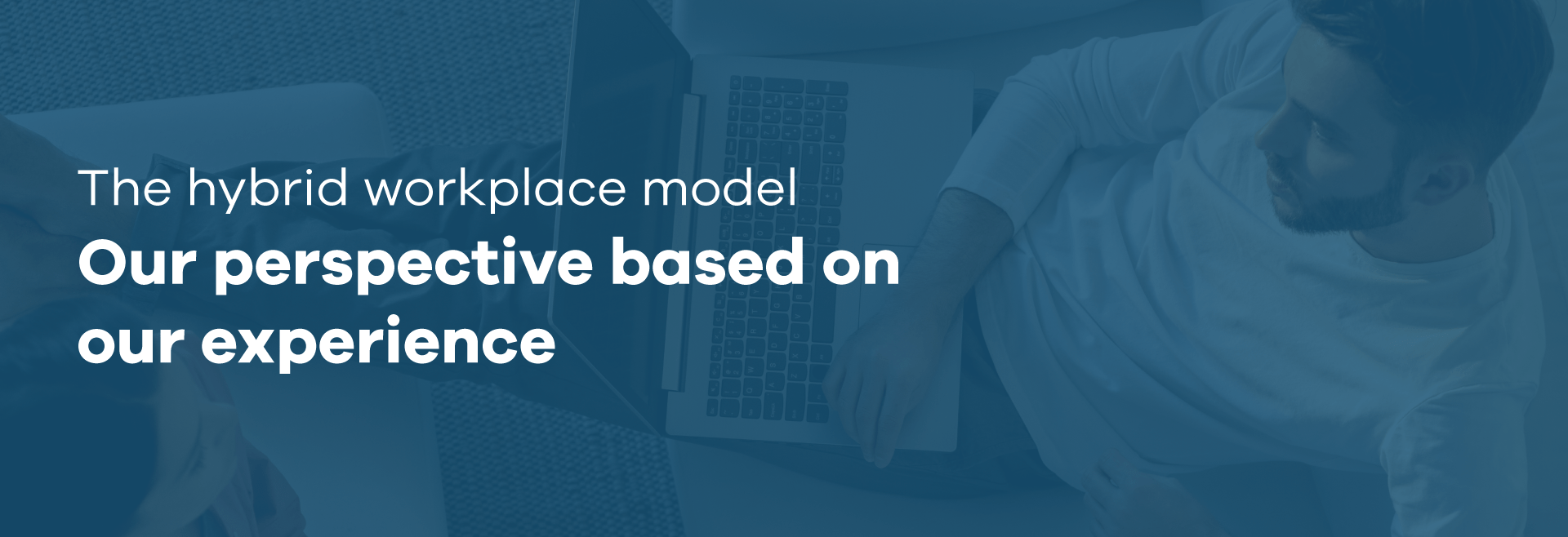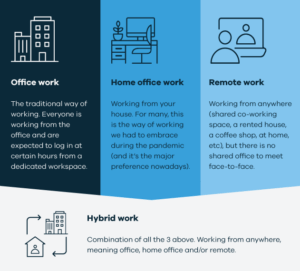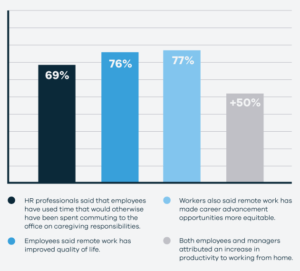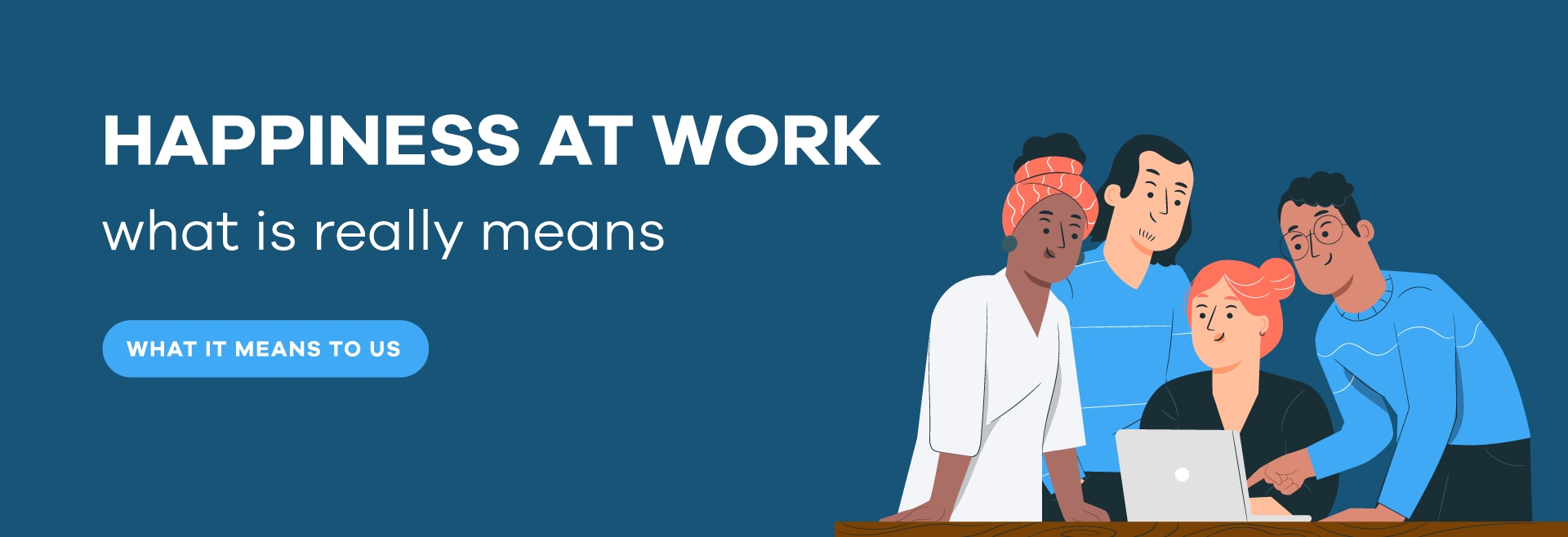
Near Partner’s Hybrid workplace model
Companies and workers have rediscovered the hybrid workplace with Pandemic.
How does Near Partner experience a hybrid work model and how does it impact our team?
When Apple’s CEO Tim Cook asked corporate staff to return to the office, he probably did not expect any significant backlash. Employees soon made it very clear that it was either the flexible-way or the highway. After months of negotiation, the tech giant finally landed on a three-day on-site policy. However, according to Topia’s 2022 Adapt Survey, 82% of companies have a remote work policy in place, and on the surface, this sounds encouraging.
What is a hybrid workplace model?
The hybrid workplace model combines face-to-face with remote work, giving employees the autonomy to choose where, when, and how to work, in order to increase their productivity and engagement.

Workplace Models
Hybrid workplaces are an ecosystem of employees who work from home, in coworking spaces, in cafes, on commute, waiting to board a plane, and also in the office. It is therefore possible to switch between various locations depending on the work that needs to be carried out, while maintaining personal interactions, which are crucial for the company’s culture.
Some say such hybrid arrangements are a stepping stone for something “steady”. Others believe that we are moving towards a Virtual Reality future, where you can put on a headset and collaborate virtually with your teammates. And there are those who argue we will all be going back to the office soon enough.
One thing is certain: nothing will ever be the same again – and that can be very positive. Companies need to provide the right collaborative tools for employees who work remotely, allowing maximum productivity without sacrificing personal time and quality of life.
Here at Near Partner we have long been working using a Hybrid model approach. We thought it was time to share our approach to hybrid work and the pros and cons as we see them.
Our experience about hybrid workplace model
At Near Partner, we are neither 100% or 100% office-based. There is no rule saying you have to come in to the office everyday or every two days – we come in whenever we want. This means some people work at the office everyday and others almost never stop by. And that’s perfectly fine, because in the recruitment process, we strive to hire those who can self-motivate.
Related to the hybrid work reality, we decided to adopt some practices:
- Hiring process: around 70% of our recruitment process is online. At the last step of the recruitment process, we invite the candidate to go to our office. The main goal is to meet the “resident team” in the office ? and tick the final box in the hiring process, a meeting with Pedro Veloso, our CEO.
- Training and Certifications: we cherish personal and professional growth. We have learning programs, such as online language courses, and total freedom to reserve time to study for technical certifications. Our most recent hiring was Luís Silva, the coach responsible for Near Partner’s Talent Development. What a ride it has been!
- Hybrid meetings: every Friday, we save 30 min to speak about random topics and once a month we replace this meeting with topics related to our organization, our all-hands meeting – Conversa de Pufes. These meetings take place in our office, but are streamed online for those at a distance.
- Communications process: our internal communication channels ensure whoever can’t be physically present knows what happens in their organization.
- Internal events: Sports Sessions, Games Nights and other events are part of our annual agenda and culture. Our main goal is to have fun and create engaging moments to connect with each other.
So, can the hybrid workplace model really be the future of work?
We believe the hybrid workplace model is here to stay. This is why.
Employees consider it more productive, and they are more satisfied
According to a recent Gartner report, in conventional face-to-face workplaces, where employees work 40 hours a week in the office, only 36% of personnel are top performers. When companies switch to a hybrid working model, that percentage leaps to 55%.
An approach that puts people first makes companies more flexible, agile, and effective. Employees can work using their own timing and methods that drive higher productivity by avoiding distractions and getting work done when they are more efficient. For example, some people work better in the morning, while others perform better in the evening.
This is type of autonomy is critical for employee satisfaction. It means each person can decide when and where to work. Statistics support this view: engaged employees can lead to a 23% increase in a company’s profit.
It is possible to hire talent from anywhere in the world (and reduce costs)
Hybrid work removes geographic limitations in the hiring process, so you won’t have to rely on employees who live close to the office. In fact, you can have access to a wider range of possibilities across the world, which means a vast talent pool. Remote work may benefit workers with a disability or chronic illness by allowing them to better contribute to company processes. So, hybrid work can add a competitive edge to your company, to your tech team, and even help you enter new markets.
True work life balance

Work life balance. Source: HR Dive
Does a hybrid workplace have limitations?
Yes, hybrid work can have some disadvantages. People are all different, so it is important to observe the effects of this method on the team to understand if everyone is benefiting from the hybrid workplace model. These are some of the most common challenges.
Limited relationships and isolation
With the hybrid work, it is harder to foster organic interpersonal relationships with co-workers. The reduction of face-to-face contact can lead to relational difficulties. These disadvantages may only set in at a later stage, so it is important to ensure that employees do not feel isolated or invisible, keeping them connected and involved, through non-physical environments and technological tools.
Weakened communication
There is also a risk of communication becoming misaligned, especially when much of the “talking” becomes non-verbal. For example, the same email can be interpreted in different ways, depending on the mood and expectations of the person reading it, as it lacks important non-verbal clues that confirm or disprove the communication.
This phenomenon happens even in online meetings, when participants adopt a less spontaneous and more formal posture. Therefore, it is important to communicate as clearly as possible, humanize interactions and clarify expectations, in order to reduce the likelihood of wrong assumptions.
Cybersecurity risks
It is common for hybrid employees to use unsecured internet connections. This can create more cybersecurity vulnerabilities, being more sensitive to hacker or phishing attacks. Therefore, it is important that companies have technologies with high security standards, and that the entire team is aware of good cybersecurity practices.
A work in progress we’re proud of
Remote work will continue to be a topic as hybrid work is driving business transformation. We believe that distributed teams should be considering their daily work based on the 3 Cs (collaboration, connection, and culture and we will speak about that next time).
In the last two years, the job market has changed significantly, and our approach to hybrid work has allowed to navigate those changes with all the advantages of working remotely and working in the office, but without many of its obligations. We believe that everyone is responsible, committed, and professional no matter from where and how they work.
For us at Near Partner, the bottom line is that people need freedom to manage their own time. In job interviews, we often share that “with freedom comes responsibility” – our own twist on that memorable Spider Man quote. However, this can be quite challenging when there is not much face-to-face contact but autonomy must be guided by mutual appreciation and positive assumptions.





